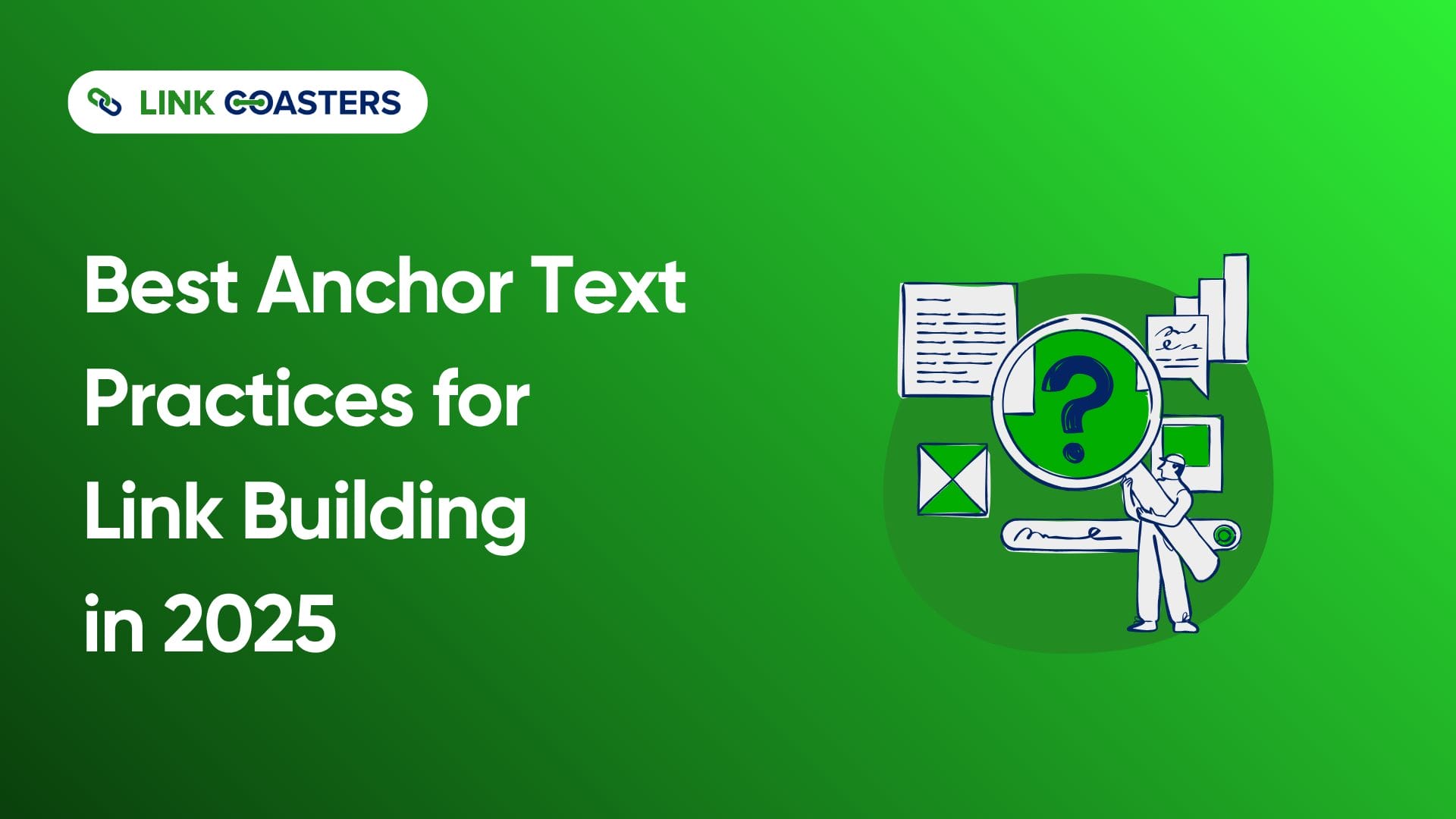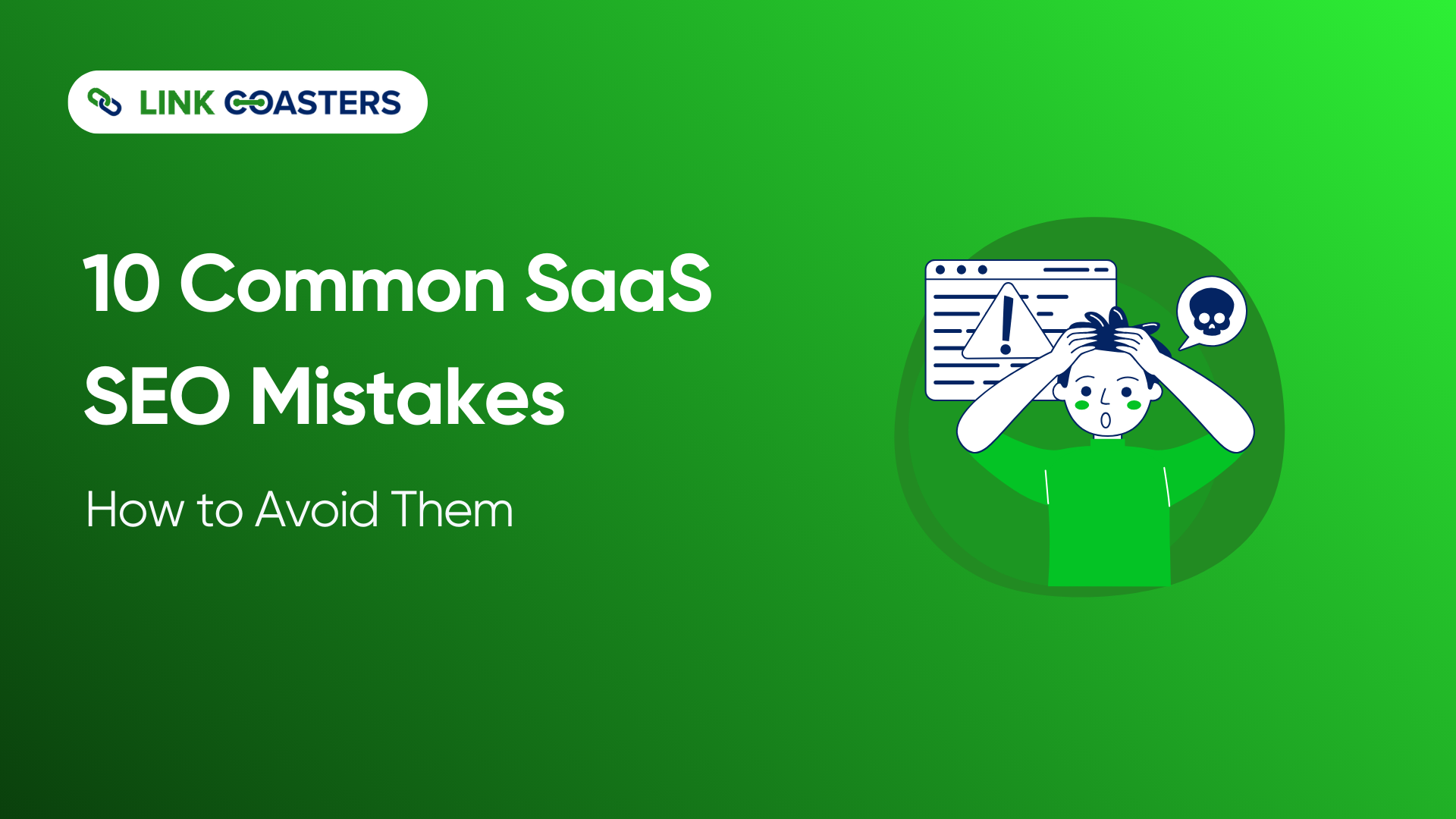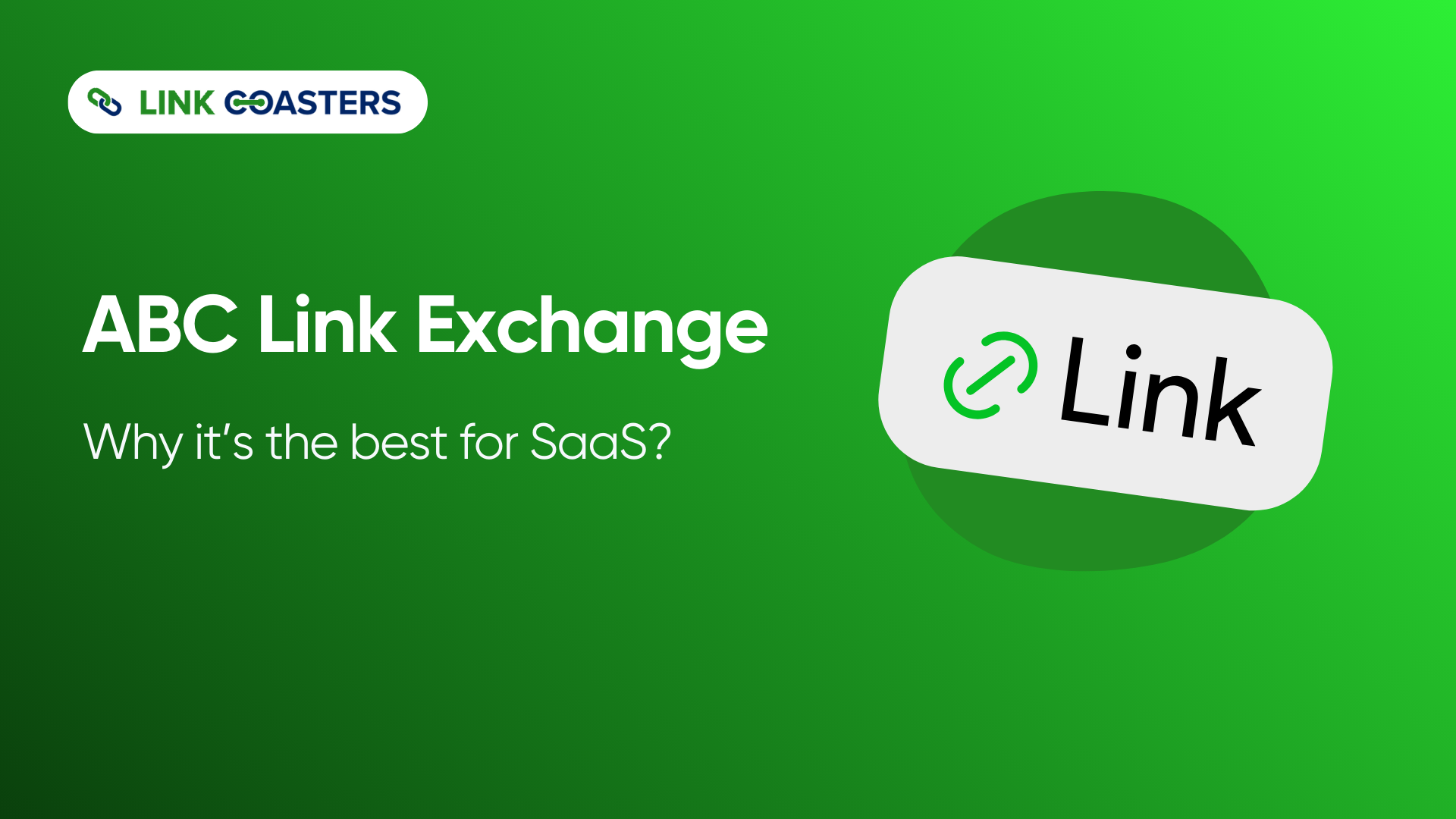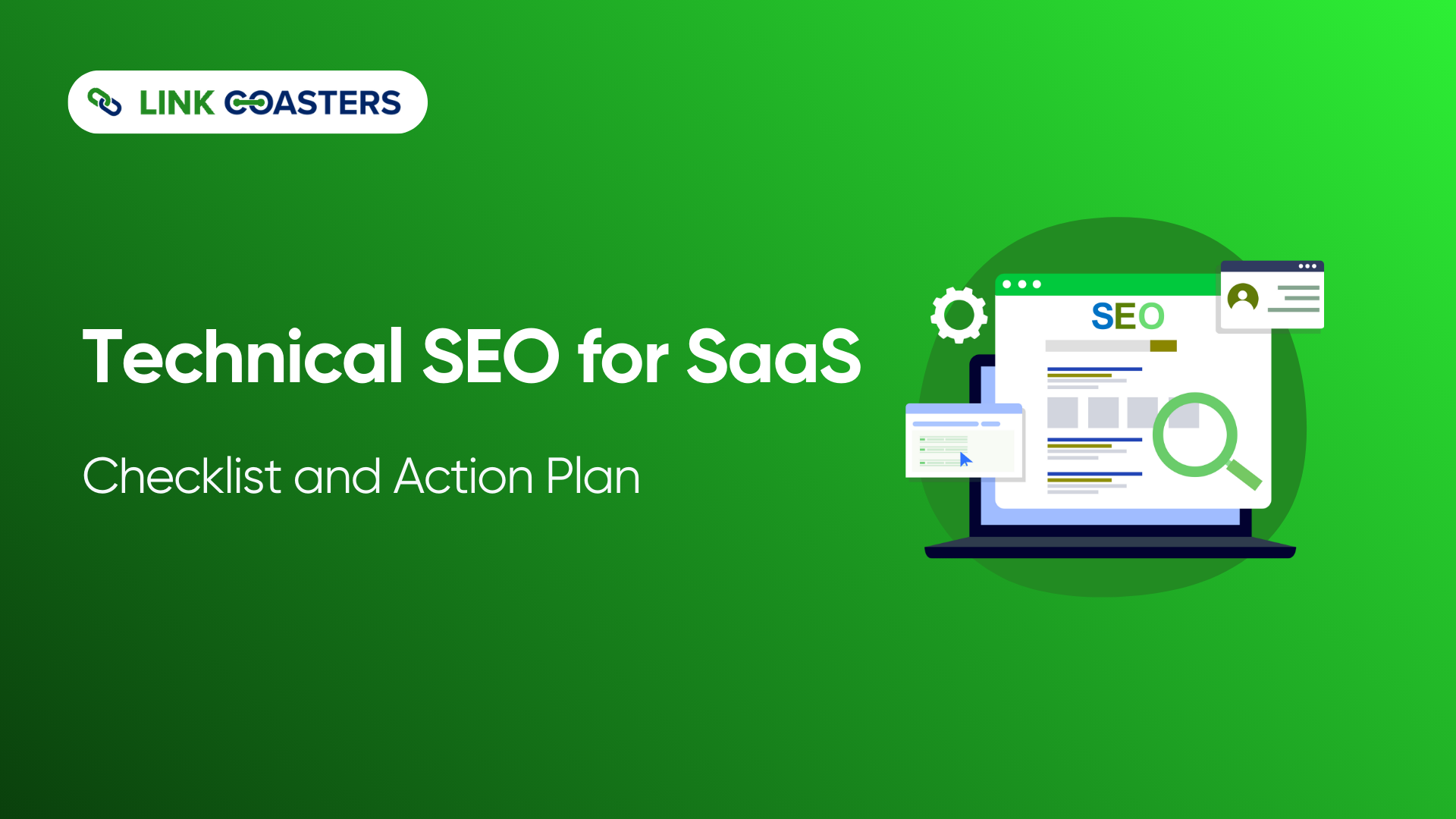You put time into creating great content, but no one visits your site. It can feel like your website is invisible. The truth is, search engines need clear signals to figure out what your site is worth.
Backlinks act as a vote of confidence from other websites. When someone links to your page, they’re telling the search engines your content is worth checking out. Google notices these votes. The more high-quality backlinks you have, your chances of ranking are higher.
In this guide, you’ll learn what backlinks are, why they matter, and how to build them the right way. By the end, you’ll know exactly how to get started with link building that helps your website grow.
What Are Backlinks?
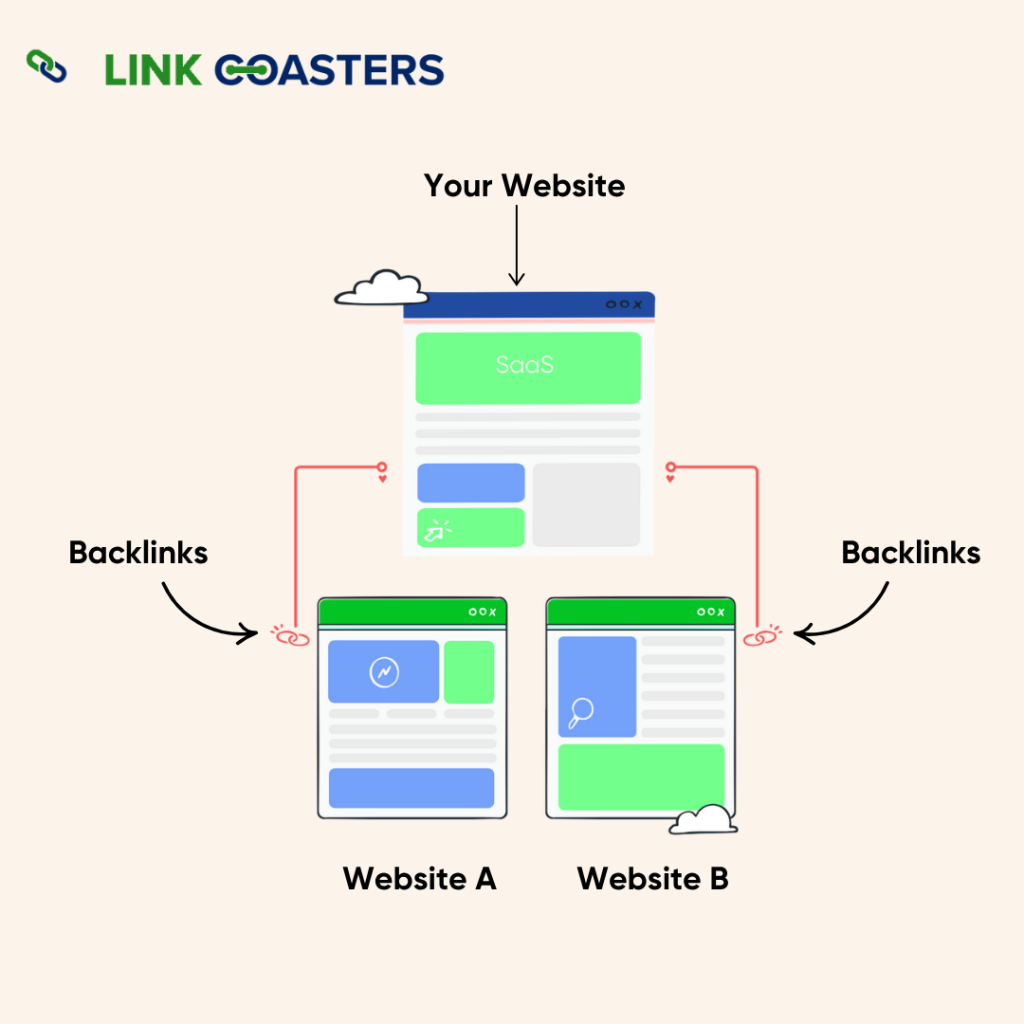
What exactly is a backlink?
A backlink is simply a link pointing from one website to another. When Website A links to Website B, that’s a backlink for Website B. It’s also called an inbound link, incoming link, or external link.
Here’s a real example: If a food blogger writes about healthy recipes and links to your nutrition website, that link pointing to your site is a backlink. The blogger’s website is the “linking domain,” and your website receives the backlink.
How backlinks work in the web ecosystem
Think of the internet as a huge web of connections. Websites link to each other to share resources, give credit, and help readers find more information. These links create pathways between related content.
Search engines use these pathways to find new content. When Google’s crawler sees a link from Website A to Website B, it follows the link and discovers new pages. This helps Google understand how websites are connected.
Benefit: Helpful links make the web better for everyone. When a site links to valuable resources, it builds trust with readers. When your site gets links from trusted sources, you gain credibility.
Key Components of Backlink (linking domain, target page, anchor text)
Every backlink contains specific elements that search engines analyze:
- The linking domain is where the link originates (high-authority domains carry more weight)
- The target page is where the link points to (homepage, blog post, or product page)
- Anchor text is the clickable word part of a link (like “best link building agency” or “learn more here”)
Anchor text helps the search engines like Google to understand what your page is about.
Types of Links Explained
Backlinks vs. Internal Links vs. External Links
Understanding the types of links prevents confusion when building your backlink SEO strategy.
- Backlinks are links gained from external sites to your site
- Internal links link one page to another on your site
- External links guide visitors from your website to another
Each link type has a different job. Backlinks boost your site’s authority and rankings. Internal links help share ranking power between your pages. External links add value for readers and show you cite credible sources.
Most SEO advice focuses on backlinks because they’re harder to control. You can create internal and external links anytime. Getting other sites to link back requires effort and strategy.
Inbound vs. Outbound Links
Inbound links are links coming from other website to your website. These are your backlinks. They bring traffic, authority, and help your rankings. Every website wants more quality inbound links.
Outbound links send readers from your site to other websites. They don’t directly boost your rankings, but they add value for your readers. Linking to trusted sources also shows Google that you cite credible information.
Smart websites use both types of links. They earn inbound links by creating valuable content. They add outbound links to make their content more useful and build relationships with other site owners.
Dofollow vs. Nofollow Links
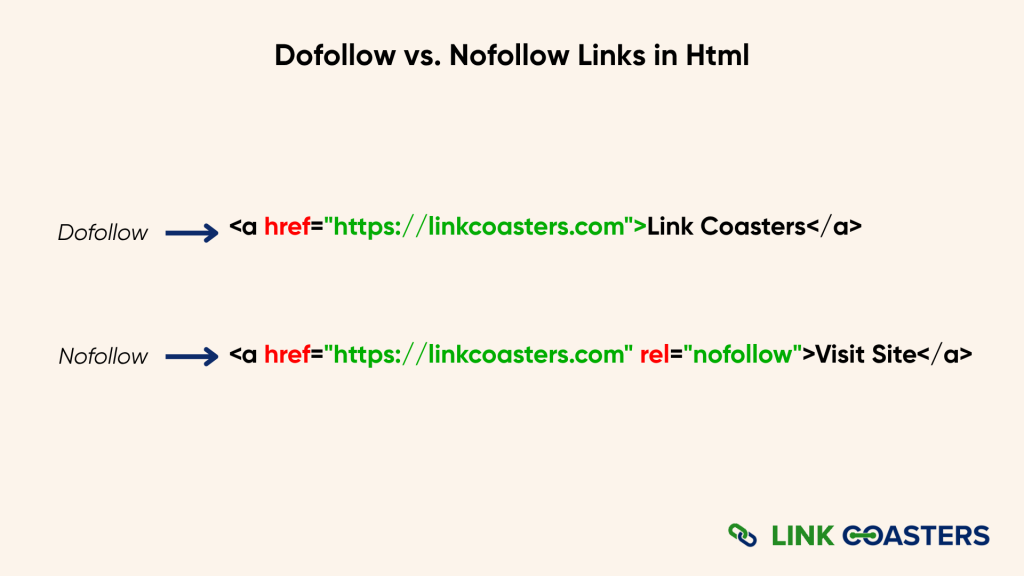
Dofollow links pass ranking power from the linking site to your site. These are the standard links that help with SEO. Google follows these links and counts them as ranking signals.
Nofollow links have a special HTML tag that tells search engines not to pass ranking power. The link can still send traffic, but it doesn’t directly help your rankings. Most social media links are nofollow.
Both types of links have value. Dofollow links help your SEO directly. Nofollow links can still bring traffic and build brand awareness. A healthy link profile has both.
Link Attributes and Tags
rel=”nofollow” attribute
The nofollow attribute tells search engines to skip passing ranking value through a link. Website owners use this when they don’t want to endorse another site or when links might be spam.
WordPress automatically adds nofollow to comment links. This prevents comment spam from helping spammers. Many websites also use nofollow for affiliate links or user-generated content.
Don’t worry too much about individual nofollow links. They still provide value through traffic and exposure. Focus on earning dofollow links from quality sources for maximum SEO benefit.
rel=”sponsored” for paid links
Google recommends using the sponsored attribute to properly disclose the paid links. This helps search engines understand commercial relationships between websites. If you pay for a link or receive compensation for linking, use rel=”sponsored”.
This follows Google’s guidelines and prevents potential penalties. Failing to disclose paid relationships can result in manual penalties.
rel=”ugc” for user-generated content
The UGC (user-generated content) attribute identifies links created by users rather than site owners. This includes forum posts, comments, and social media shares.
Platforms like Reddit and Facebook often use this attribute automatically. It helps Google understand that the site owner didn’t editorially place these links.
Why Are Backlinks Important?
SEO Benefits of Backlinks
How Google uses backlinks for ranking
Google treats backlinks as votes of confidence. When authority websites link to your content, Google interprets it as quality and trustworthy. This directly influences your search rankings.
Quality beats quantity: The search giant analyzes both the quantity and quality of your backlinks. A backlink from a respected news source typically holds more authority than several from unknown sites.
Google’s algorithm considers hundreds of ranking factors, but backlinks remain among the most important. Studies consistently show strong correlations between high-quality backlinks and top search positions.
PageRank and link equity transfer
PageRank is Google’s original method for measuring webpage importance based on links. While Google no longer publicly shares PageRank scores, the concept still influences rankings behind the scenes.
When a page with high authority links to your site, it passes some of its “link equity” or “link juice” to your page. This authority transfer helps boost your page’s ranking potential.
The ripple effect: When you earn a strong backlink to your homepage, that value doesn't just stay there; it gets distributed throughout your site via internal links. This means that even pages deeper in your website can benefit from a single powerful link.
Discovery and crawling benefits
Backlinks help search engines find your content faster. When Google crawls a website and discovers a link to your page, it follows that link and indexes your content.
Benefits for new sites: New websites especially benefit from backlinks for crawling purposes. Without backlinks from other sites, search engines often need extra time to locate your pages. Quality backlinks act like pathways leading search bots to your content.
Authority and Trust Signals
Domain Authority (DA) and Domain Rating (DR)
Domain Authority and Domain Rating are third-party scores that estimate a site’s ranking potential. DA comes from Moz, while DR comes from Ahrefs.
Higher authority scores generally indicate stronger websites with better ranking potential. A backlink from a site with DA 80 typically provides more value than one from a DA 20 site. However, relevance matters too.
Topical relevance and expertise signals
Google values link and page relevance highly when evaluating backlinks. A link from a fitness blog to your gym’s website carries more weight than a random link from an unrelated tech blog.
Why niche matters: Industry-specific websites linking to your content tell Google you're an authority in that field. If multiple dental websites link to your oral health guide, Google understands you provide valuable dental information.
Focus on earning links from websites that serve your target audience. These relevant backlinks provide both SEO value and qualified traffic.
Building brand credibility online
Backlinks from respected sources build your brand’s online credibility. When major publications link to your content, their audience sees you as a trusted authority.
The trust factor: Customers research businesses online before making decisions. Seeing your brand mentioned and linked by credible sources increases consumer confidence. This social proof can directly impact sales and conversions.
Traffic and Business Benefits of Backlinks
Direct referral traffic
Quality backlinks send targeted visitors directly to your website. Unlike search traffic, referral traffic comes from people already engaged with related content. These visitors often convert better because they arrive with a genuine interest.
A single link from a popular blog can drive hundreds or thousands of visitors. If that content remains live for years, the traffic benefits compound over time.
Tip: Track referral traffic in Google Analytics to measure backlink performance. Some links might not boost rankings significantly, but still deliver valuable traffic.
Brand visibility and exposure
Every backlink increases your brand’s online exposure. Even if people don’t click the link immediately, they see your brand name and remember it. This repeated exposure builds brand recognition over time.
Links in high-traffic publications can expose your brand to thousands of potential customers. This visibility often leads to additional coverage, social media mentions, and direct website visits.
Networking and relationship building
Link building naturally creates connections with other website owners, journalists, and industry influencers. These relationships often become valuable business partnerships beyond just link exchanges.
Collaborating with other websites can lead to joint ventures, speaking opportunities, and referral partnerships. Many successful businesses trace major opportunities back to connections made during link building outreach.
What Are the Different Types of Backlinks?
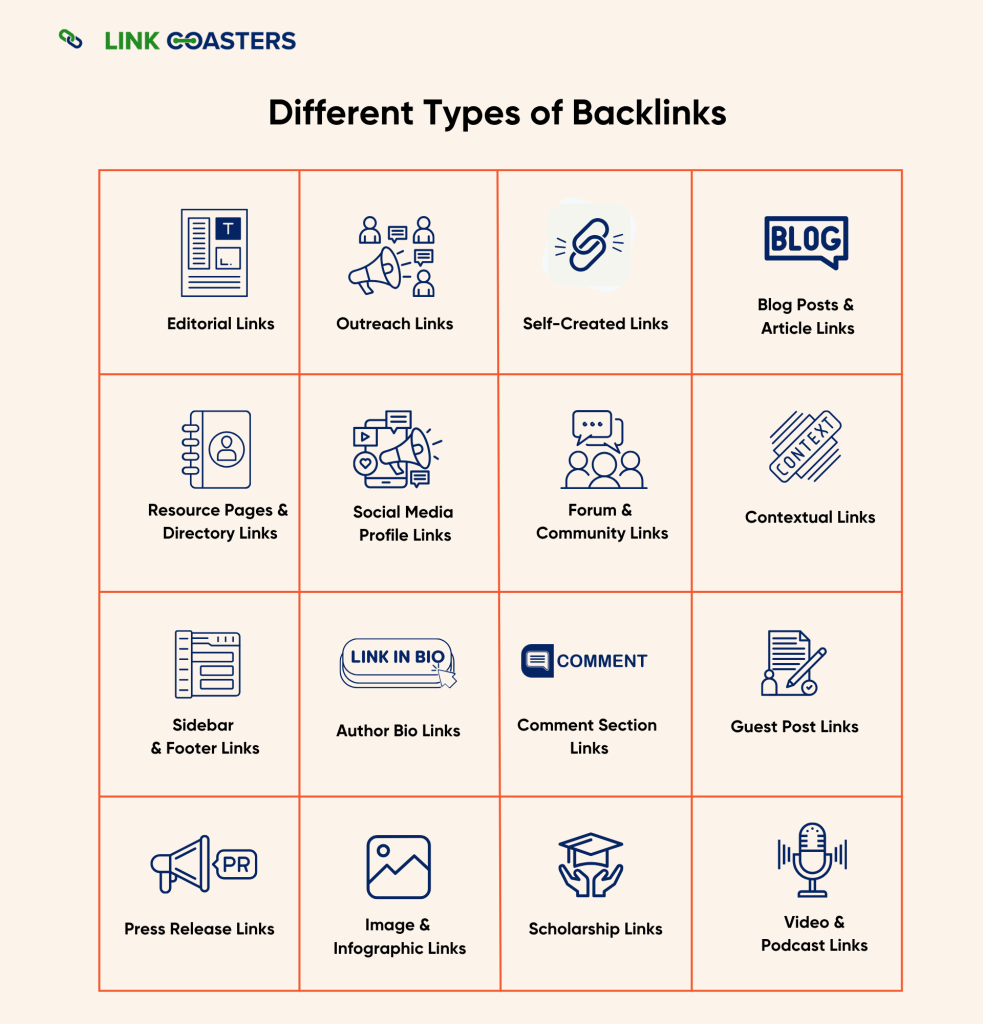
Editorial Links
Editorial links are considered the highest quality type of backlink. These occur when website owners, journalists, or content creators voluntarily link to your content because they find it valuable. No payment or direct request is involved.
Why they matter: These links carry the most SEO weight because they represent genuine endorsements. Google trusts editorial links more than other types because they indicate real value and relevance.
Earning editorial links starts with content worth citing. Create content that solves real problems.
Outreach Links
Outreach means asking for the link. You approach bloggers, editors, and relevant publishers, or connect with industry websites that could benefit from linking to your content.
The key to success: Successful outreach requires offering genuine value. Simply asking for links rarely works. Instead, explain how linking to your content benefits their audience.
Self-Created Links
Self-created links are those you can add yourself from other websites without requiring approval. This includes directory submissions, forum signatures, social media profiles, and comment links.
While easier to obtain, they typically provide less SEO value. Google recognizes that these links don’t represent editorial endorsements.
Be selective: Focus on high-quality directories and relevant forums where your target audience actually spends time. Avoid spammy directories or irrelevant platforms.
Blog Posts and Article Links
Links within blog posts and articles often provide more SEO value. These contextual links appear naturally within the content, making them more valuable than sidebar or footer links.
Guest posting on relevant blogs is one way to earn links. When done properly, you provide valuable content to another blog’s audience while getting a quality backlink.
Resource Pages and Directory Links
Resource pages compile helpful links for specific topics or industries. Getting listed on relevant resource pages can provide steady traffic and SEO benefits.
How to find them: Look for resource pages in your industry by searching terms like “marketing resources” or “best SEO tools.” Many organizations, universities, and industry associations maintain resource pages that accept quality submissions.
Social Media Profile Links
Many social platforms give users the option to display website links on profiles. While these links are typically “nofollow“, they can still drive traffic and increase brand visibility.
LinkedIn, Twitter, Facebook, and Instagram all provide opportunities to link back to your website. Some platforms, like LinkedIn, allow multiple links.
Forum and Community Links
Consistent participation in online communities and forums can help attract natural backlinks. When you provide helpful answers or insights, people often click through to learn more about you and your business.
The right approach: The key is genuine participation rather than link dropping. Become known for providing valuable contributions before including any links.
Contextual Links
Contextual links appear within the main content of web pages, surrounded by relevant text. These links typically carry more SEO weight than those in sidebars, footers, or other less prominent locations.
The surrounding content gives contextual links additional relevance signals. If your backlink appears in a paragraph discussing SEO tools, Google understands the topical connection more clearly.
Sidebar and Footer Links
Sidebar and footer links repeat across many pages. They are weaker than contextual links, but they can still provide benefits, especially for brand awareness and direct traffic.
Many websites offer sidebar advertising or partner link opportunities. These placements give you exposure across the entire site rather than just single pages.
Author Bio Links
When you contribute guest content, author bio links provide a natural way to link back to your website. Most publications allow contributors to include brief bios with website links.
Maximize the value: Make your author bio compelling enough that people want to click through. Briefly explain what you do and how you can help readers.
Comment Section Links
Blog comments occasionally allow links, though many sites have moved to “nofollow” attributes for comment links. The primary value comes from engagement and potential traffic rather than direct SEO benefits.
Note: Never leave comments solely for link purposes. Focus on adding value to the conversation.
Guest Post Links
Guest posting refers to publishing on different websites to earn linking opportunities. This strategy can be highly effective when you focus on publishing high-quality content that serves your target audience.
The best guest post opportunities come from websites you already trust. Your content should provide genuine value to your audience.
Press Release Links
Press releases can generate backlinks when news outlets pick up and republish your stories. However, direct links from press release distribution sites typically provide minimal SEO value due to widespread syndication.
The real value: The real value comes when journalists use your press release as a source for original stories. These editorial mentions and links carry much more weight.
Image and Infographic Links
Visual content like infographics, charts, and images can attract backlinks when other websites use or reference them. Always include embed codes to make it easy for others to share your visuals properly.
High-quality infographics can go viral in certain industries, generating dozens or hundreds of backlinks. The key is creating visuals that tell compelling stories or present data in unique ways.
Scholarship Links
Many educational institutions maintain pages listing scholarships and educational opportunities. If you offer scholarships, these links can provide high-authority backlinks from .edu domains.
Only pursue this strategy if you’re committed to running a real scholarship program that helps students.
Video and Podcast Links
Video descriptions and podcast show notes often include links to resources mentioned during the content. Appearing as a podcast guest or having your content referenced in videos can generate valuable backlinks.
Important note: Most YouTube description links are nofollow, meaning they do not pass link equity. While they won't directly boost your site's SEO, YouTube backlinks are still valuable because they drive referral traffic.
How we build backlinks at Link Coasters
At Linkcoasters, we turn outreach into a repeatable system for growth. You set priorities. Our link building team executes with speed, care, and accountability.
Our process:
- We begin with rigorous research across your niche. Every publisher is vetted for relevance, quality, and real audience fit. Editors receive clear, value-first pitches that win replies.
- Our placements are contextual and inside body content, usually on DR 40 to 70+ sites. We target pages that already cover your topic.
- Anchor text matches the target page and the user intent. We avoid forced keywords and risky patterns. Links read naturally and help real readers to take the next step, when you follow the best anchor text practices.
- You keep control over topics and target pages. We keep outreach aligned and on-message.
- Quality control is built into every stage of the process. We review domain history and outbound link behavior. Ss that link farms and thin directories never enter the pipeline.
- Each placement is verified before delivery. We confirm indexing, anchor usage, and rel attributes where needed. Nothing ships until it clears our final checklist.
- Report is clean and actionable. You get live URLs, domain metrics, and context notes. Progress is obvious, and the workload stays off your plate.
Types of Backlinks to Avoid

Low-Quality Article Directories
Old-school article directories were once popular for SEO, but Google now views most as low-quality link sources. These sites often accept any content without editorial standards.
Better approach: Focus on getting published on legitimate websites with editorial standards instead.
Sites with Excessive Outbound Links
Websites that link to hundreds or thousands of other sites provide little link value to anyone. These link farms spread their authority so thin that individual links become nearly worthless.
Check how many outbound links appear on pages that link to you. Pages with reasonable link counts (under 100) typically provide more value than those with excessive linking.
Paid Links Without Proper Disclosure
Buying links violates Google’s guidelines and can result in penalties. However, the bigger risk comes from paid links that aren’t properly disclosed with rel=”sponsored” or other appropriate attributes.
Some sites sell links disguised as editorial content. These undisclosed paid placements risk manual penalties if Google discovers them.
Link Farms and Private Blog Networks (PBNs)
Link farms are collections of websites created specifically to provide backlinks to target sites. Private Blog Networks (PBNs) are similar but often use expired domains to appear more legitimate.
Google has become sophisticated at detecting artificial link networks. Sites participating in these schemes risk severe penalties that can take months or years to recover from.
Links from Penalized or Hacked Sites
Backlinks from websites that Google has penalized can potentially harm your own rankings. Similarly, links from hacked sites often appear in spam sections that provide no real value.
What to do: Monitor your backlink profile regularly to identify potentially harmful links. If you discover links from obviously penalized or compromised sites, consider using Google’s disavow tool.
Forum & Blog Comment Spam
Automated comment spam on blogs and forums creates low-value links that can actually hurt your reputation. These obvious spam attempts make your brand look unprofessional and can trigger penalties.
If you participate in forums or comment on blogs, focus on genuine engagement rather than link building. Valuable contributions naturally lead to better opportunities.
How to Check and Analyze Backlinks?
Free Backlink Analysis Tools/Platforms
Google Search Console
Google Search Console provides the most authoritative data about your backlinks since it comes directly from Google. The Links section shows which sites link to you, your most linked pages, and anchor text usage.
This free tool updates regularly and includes links that Google actually counts for rankings. Set up Search Console for every website you own.
Google Alerts for Mentions
Google Alerts notify you when your brand name, website, or key topics are mentioned online. Many of these mentions don’t include links initially but represent opportunities to request links from publishers.
Tip: This proactive monitoring helps you catch link opportunities quickly while the content is still fresh.
Bing Webmaster Tools
While Google dominates search, Bing Webmaster Tools provides additional backlink insights that complement Google Search Console data. Some links appear in Bing’s data that don’t show up in Google’s reports.
Setting up Bing Webmaster Tools takes just a few minutes and provides another free data source.
Basic Manual Backlink Checking Method
Sometimes the simplest approach works best for specific link checks. Use search operators like “site:example.com yourwebsite.com” to find pages that mention your site on specific domains.
Premium Backlink Analysis Tools
Ahrefs Backlink Checker
Ahrefs keeps tabs on billions of backlinks and is constantly updating its data. With their Site Explorer tool, you get a clear, detailed look at any website’s backlink profile, plus you can see how those links have changed and grown over time.
Ahrefs excels at competitor analysis, showing you exactly where competitors get their best links.
SEMrush Backlink Analytics
SEMrush combines backlink analysis with broader SEO and marketing insights. Their Backlink Analytics tool shows not only your links but also estimates the traffic and keyword rankings that those links might influence.
The toxic links feature automatically identifies potentially harmful backlinks that might need disavowing.
Moz Link Explorer
Moz Link Explorer provides backlink data along with their proprietary Domain Authority and Page Authority metrics. These metrics help prioritize link prospects based on their potential SEO impact.
The spam score feature flags potentially harmful links before they can hurt your rankings.
Majestic SEO
Majestic focuses specifically on link intelligence, providing detailed backlink data along with unique metrics like Trust Flow and Citation Flow.
It stands out because it stores backlink data longer than most other tools. This means you can see how websites have built up their links and authority over the years.
Key Metrics to Analyze
- Total Referring Domains
- Domain Authority/Rating Scores
- Anchor Text Distribution
- Link Velocity and Growth Patterns of Backlinks
Competitor Backlink Analysis
Identifying Competitor Link Sources
Take a look at where your main competitors are getting their backlinks. This helps you spot practical opportunities for your own link building.
Pay attention to any patterns you see. Are your competitors getting lots of mentions on industry blogs, news websites, or resource pages?
Gap Analysis Opportunities
Analyze your backlink profile against competitors to spot missing link opportunities. Many SEO tools offer gap analysis features that automatically identify these opportunities.
Prioritize gap opportunities based on domain authority, relevance, and likelihood of success.
Reverse Engineering Successful Campaigns
When competitors experience sudden link growth, investigate what caused the spike. Did they publish remarkable content, launch a new tool, or run a successful PR campaign?
Focus on the building blocks behind successful campaigns, not just the one-off wins.
What Tips Should You Keep in Mind When Building Backlinks?
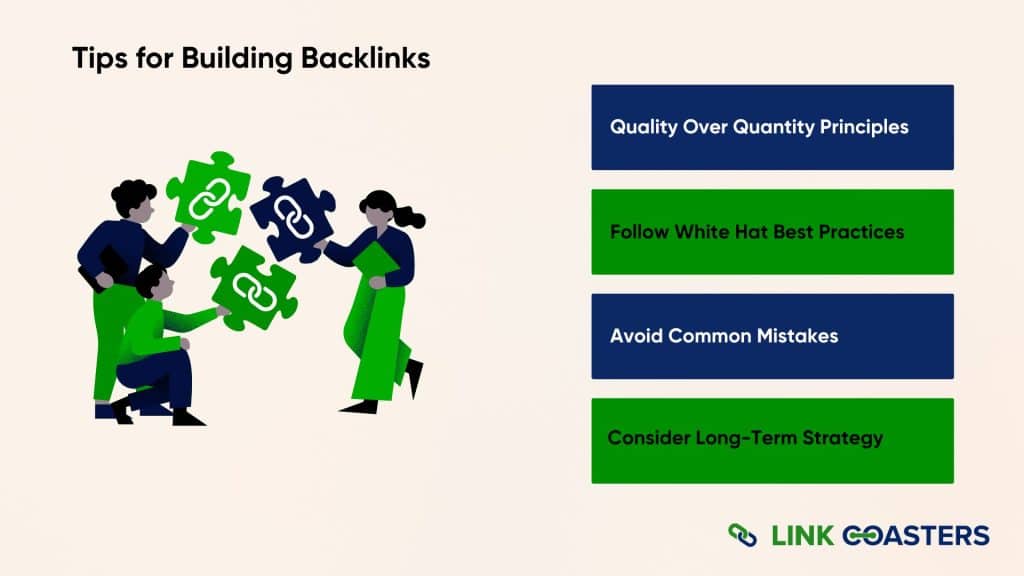
Quality Over Quantity Principles
Focus on Relevant, Authoritative Sources
Getting a single link from a respected industry website is worth far more than a bunch of random links from unrelated sites. Search engines care about quality and relevance.
What really counts: How closely a site matches your audience and topic. A link from a marketing blog to your marketing software is a much stronger signal than a link from a cooking blog.
Maintain Natural Link Velocity
Don’t rush to get as many links as possible all at once. Earning backlinks is like growing a garden: steady, consistent effort pays off more than sudden bursts.
Focus on building a few high-quality links each month, rather than going all-in for a short period and then stopping.
Diversify Your Link Profile
Healthy websites receive links from various source types: blogs, news sites, directories, social media, and industry resources. Over-reliance on any single link type can appear manipulative to search engines.
Diversification applies to anchor text, linking page types, and link placement locations, too.
White Hat Best Practices
Build Genuine Relationships
The most successful link builders focus on relationship building rather than transactional link requests. Genuine connections with industry influencers, journalists, and website owners create ongoing opportunities.
How to start: Engage with content from websites you want links from. Share their articles, leave thoughtful comments, and participate in discussions.
Create Link-Worthy Content First
The best link building strategies start with content that naturally attracts links. Comprehensive guides, original research, useful tools, and unique insights give other websites reasons to reference your work.
Before launching outreach campaigns, ensure your content provides genuine value that justifies linking.
Follow Google’s Webmaster Guidelines
Google’s Webmaster Guidelines are like a rulebook for safe and effective link building. Follow these rules to avoid penalties and set your website up for long-term success.
Use Proper Link Attributes When Needed
Knowing when to use “nofollow”, sponsored, or UGC attributes shows Google you’re playing fair.
Use rel=”sponsored” for any paid links or partnerships. For links that come from user comments, untrusted sources, or anywhere you don’t want to give a full endorsement, use the rel=”nofollow” tag.
Common Mistakes to Avoid
Over-Optimized Anchor Text
Using the same anchor text too often in backlinks may appear spammy and invite penalties. Real editorial links typically use varied anchor text.
Try to keep your anchor text varied, just like how people would naturally mention your site. Most links should use your brand name or everyday language, while only a few should include your main keywords.
Buying Links Without Disclosure
Purchasing links without proper disclosure violates Google’s guidelines and can result in severe penalties. Always use rel=”sponsored” attributes for any paid link placements.
The risk of undisclosed paid links extends beyond your own site. If Google penalizes the linking site, those penalties can affect all sites receiving links from that source.
Ignoring Link Relevance
Links from completely unrelated websites provide minimal SEO value and can actually harm your rankings if they appear manipulative.
Ask yourself: Would the linking site’s audience genuinely find your content valuable? If the connection seems forced or unnatural, the link probably won’t help your SEO efforts.
Focusing Only on Homepage Links
A lot of website owners focus all their link-building efforts on their homepage. Instead, aim to get links to a variety of pages across your site.
Spreading those links around helps strengthen your whole website, not just your homepage.
Long-Term Strategy Considerations
Building Sustainable Link Assets
If you want links that last, create things people will actually want to share even years down the road. Focus on making resources like step-by-step guides, handy free tools, or answers to common questions that never go out of style. Yes, it takes more effort up front, but the payoff is big.
Maintaining Link Relationships
Getting a link from another website is just the beginning. To keep the benefits going, focus on building genuine relationships with the people who link to you.
Keep in touch with journalists, bloggers, and industry contacts who have already linked to your site. Send them helpful updates, offer your perspective on new topics, and share resources they might find useful.
Adapting to Algorithm Changes
Search engine algorithms continuously evolve, affecting link building strategies. Keep track of major updates and adapt strategies while prioritizing core quality practices.
Google’s main advice about links hasn’t changed much: focus on earning genuine links by creating valuable content.
What Are the Most Effective Backlinking Strategies for Beginners?
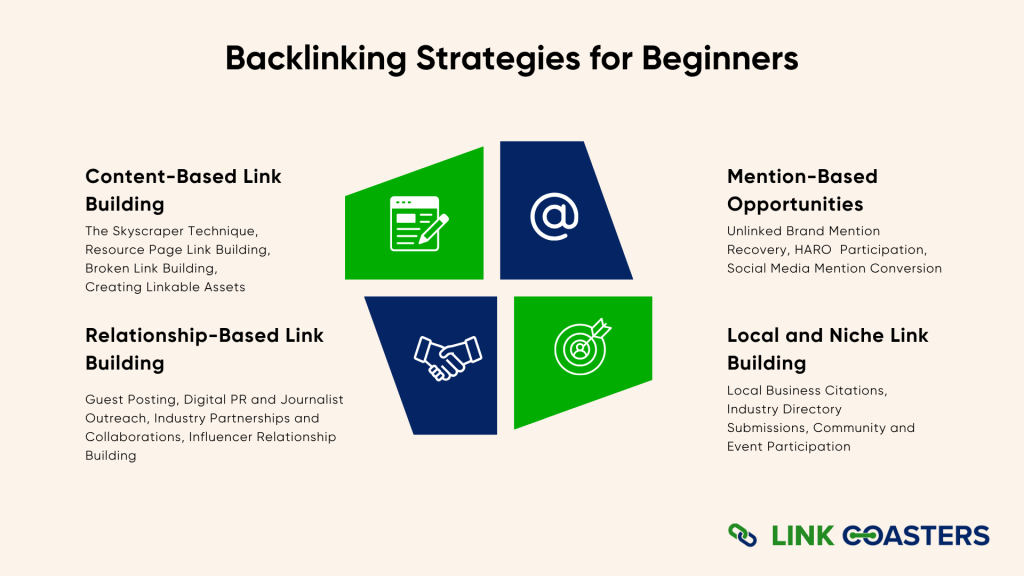
Content-Based Link Building
Creating Linkable Assets (Guides, Tools, Research)
The most sustainable link building starts with creating content that naturally attracts links:
- Ultimate guides become go-to resources within industries
- Free tools attract links through immediate utility
- Original research provides fresh information journalists need
Ultimate guides work particularly well because when someone needs to explain a complex topic, they often link to the most comprehensive guide available.
The Skyscraper Technique
The Skyscraper Technique is all about finding top-performing content in your industry and making something even better.
How it works:
- Identify content that has attracted many links using tools like Ahrefs or SEMrush
- Create your own upgraded version with latest information, better design, new examples
- Reach out to the sites that links to the original content
If your resource truly outshines the old one, many site owners will be happy to update their links.
Resource Page Link Building
Many websites maintain resource pages listing helpful tools, guides, and websites for their audience. Getting listed provides steady traffic and SEO benefits.
How to find them: Search terms like “marketing resources,” “SEO tools,” or “[your industry] links.”
Craft personalized outreach explaining specifically how your resource would benefit their page visitors.
Broken Link Building
Broken link building involves finding dead links on relevant websites and suggesting your content as a replacement.
Why it works: You’re solving a real problem for website owners. Broken links hurt user experience and SEO, so most owners appreciate notifications about issues they need to fix.
Relationship-Based Link Building
Guest Posting (Done Right)
Quality guest posting involves contributing valuable content to other websites in exchange for backlinks. Prioritize publications that match your audience and uphold strong editorial standards.
Best practices:
- Research publications where your ideal customers spend time
- Pitch unique, valuable content ideas
- Deliver exceptional content that exceeds normal standards
Digital PR and Journalist Outreach
Digital PR involves earning coverage and links from news publications by providing newsworthy information, expert commentary, or unique insights.
Build lists of journalists who cover your industry. Develop newsworthy angles for your business activities, research, or industry insights.
Timing matters: Breaking news, industry events, and seasonal topics create opportunities to provide timely expert commentary.
Industry Partnerships and Collaborations
Partnering with complementary businesses creates natural opportunities for mutual linking and promotion.
Look for businesses that serve similar customers without directly competing with you. Collaborate on content, events, webinars, or research projects.
Influencer Relationship Building
Industry influencers often control valuable website properties, guest posting opportunities, and social media audiences.
Provide value to influencers before asking for anything in return. Share their content, attend their events, and engage meaningfully with their work.
Mention-Based Opportunities
Unlinked Brand Mention Recovery
Many websites mention your brand without including links. These unlinked mentions represent easy link building opportunities since the content already exists.
Set up Google Alerts for your brand name, key executives, and main products. When you find unlinked mentions, reach out politely to request link additions.
HARO (Help A Reporter Out) Participation
HARO connects journalists with expert sources for stories they’re writing. Participating consistently can result in high-quality backlinks from major publications.
Tips for success:
- Sign up for HARO in relevant categories
- Respond quickly (journalists work on tight deadlines)
- Provide comprehensive, quotable responses
Social Media Mention Conversion
Brand mentions on social media can become backlinks if you encourage users to include the actual URL. This works particularly well with industry professionals who maintain blogs or websites.
Engage genuinely with social media mentions before suggesting link additions.
Local and Niche Link Building
Citations for Local Business
Local businesses benefit significantly from citations in directories, chambers of commerce, and community websites. These local links help with both general SEO and local search visibility.
Start by listing on Google My Business, Yelp, and directories that match your business field. Ensure NAP (Name, Address, Phone) consistency across all listings.
Industry Directory Submissions
Quality industry directories still provide value when chosen carefully. Focus on directories that actual customers use to find services.
Research which directories your competitors appear in and where your customers might look for businesses like yours.
Community and Event Participation
Active participation in community events, industry conferences, and professional organizations creates natural opportunities for local links and industry recognition.
Speaking at events, sponsoring activities, or organizing community initiatives often results in coverage on event websites, news sites, and participant blogs.
Conclusion
Backlinks are still one of the biggest keys to SEO success, but the way you earn them has changed a lot. These days, it’s all about getting links naturally by sharing helpful content and building real relationships, not by trying to trick search engines.
If you want lasting results, you’ll need a bit of patience and steady effort. Good link building doesn’t happen overnight, but the rewards add up over time.
If you’d rather not run a full outreach program, we can help. Link Coasters secures contextual placements on relevant SaaS sites. You set the goals; we do the heavy lifting.
The strategies in this guide are here to help you build links that last. Start with content that’s truly useful, then focus on building real relationships to earn links from the right places.
In the end, link building comes down to connecting with real people who can help your business grow. Put your energy into being helpful, building genuine relationships, and creating content people actually want to share. When you do that, the links will come naturally.
Key Takeaways
- Link quality matters more than quantity in modern SEO
- Content-based strategies provide the most sustainable results
- Relationship building accelerates link acquisition
- Avoid manipulative tactics that risk penalties
- Monitor and analyze your link profile regularly
- Diversification strengthens your link profile
FAQ
A backlink is simply a link pointing from one website to another, also called inbound links.
Use tools like Ahrefs, SEMrush, or Moz to see which sites link to any domain. Google Search Console shows backlinks for your own verified website.
Try quoted brand searches and exclude your own site. For example: “yourdomain.com” -site:yourdomain.com or “Your Brand” -site:yourdomain.com. Combine operators like site: to search a single domain, intitle: to find pages with your brand in the title, and inurl: to target likely pages.
For low-competition keywords, a handful may work. For competitive terms, you’ll likely need dozens or more from trusted sources.
Typically 2–12 weeks. Google needs time to crawl the links and adjust rankings based on their authority.
Submit to free directories, answer questions on Quora or Reddit, and create content people naturally share.



